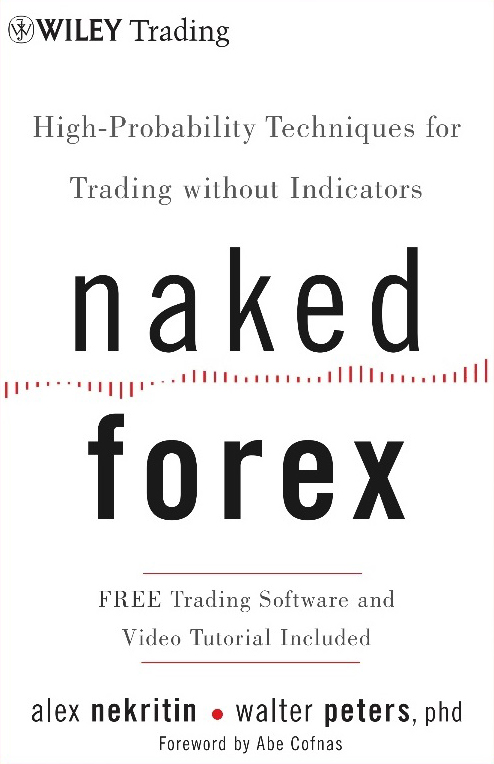DOM provides an easy way to measure liquidity and market depth without having to use additional charts. Find out how to build a trading strategy with it.

Nowadays, there are many indicators that can be used to analyze market activity. One of the most useful options is called Depth of Market (DOM), which is an effective way to measure the liquidity of a specific asset by looking at the orders in the market. For many traders, DOM is a powerful trading strategy that provides a deeper insight into market movements. If you're curious about how it works, read the full explanation below.
Understanding Market Depth
Depth of Market (DOM) is a measure of the supply and demand of a specific tradable asset such as stocks or even currencies. DOM is also known as the order book because it records the number of buy and sell orders of a particular asset. These numbers are an indicator of liquidity, which can be helpful to determine positions and the direction of the market in the near future.
Generally, a market with a huge number of orders is considered highly liquid. If a market is highly liquid with a huge number of buyers and sellers, the market is usually deep, which means that it is capable of absorbing huge orders without affecting the price of the asset significantly. This shows that the orders are fairly distributed among traders around the current market price.
Traders can use such information for various purposes. First of all, DOM can help traders to determine the number of shares they can buy or sell without causing massive price changes. If the market is highly liquid, large orders won't cause significant price changes. On the contrary, placing a large order when the liquidity is low can trigger an extreme price movement.
That being said, traders need to put DOM into consideration before trading, especially when placing a large order. When the market is not really deep, traders might have to break their large orders into several small pieces and execute them one by one at a different price level. If it's a buy order, the price level will move up one at a time every time a set of orders is executed. Conversely, if it's a sell order, the price level will gradually move down.
Traders can also use DOM to predict the direction of the price in the near future by looking at the overall trend of the orders. Then, they can determine whether it's a good time to buy or sell the asset. Apart from that, the market depth data is also important to understand the bid-ask spread as well as the current volume.
Last but not least, DOM allows traders to take advantage of short-term price volatility. For instance, when a company releases an Initial Public Offering (IPO), traders can watch the market in real-time via DOM to wait for the perfect opportunity to buy or sell shares at a certain price level.
See Also:
Main Components of DOM
DOM comes in the form of a window that shows real-time market activity at various price levels in a market. At first, DOM might seem really confusing because there are so many numbers. But in reality, you don't have to pay attention to every single one of them. Instead, you just need to focus more on the flow of the market and how the numbers are moving.
Before we learn more about how to use DOM in trading, let's take a look at the main components of DOM.
- Bid and Offers: These numbers are also known as passive orders because they are still not active. However, many of these are submitted by market makers, so a lot of bids and offers are fake and even move away when the price is going near them.
- Buy and Sell Market Orders: These are the numbers that are trading right now. This is very important because it shows you the real ongoing buyer and seller dynamics in the market. In this case, look for obvious changes. For instance, sellers keep selling even though the price stops moving.
- Momentum Tails: These are the shading that trails market orders in order to give you insight into the market momentum. The longer the tail, the faster the market is moving (the higher the momentum).
- Volume Profile: This shows the volume traded at each price. Thus, you can map out where traders are positioned and when they are likely to be stopped out.
- Pulling and Stacking: This part indicates if people are adding or reducing buy/sell limit orders on the market. Just like market orders, these numbers are also happening right now. You can use these numbers to determine your entry point. For example, if you're planning to buy but bidders seem to be decreasing in number, then you'll need to wait for the right moment.
DOM components can differ between platforms and markets. Therefore, not all aspects above would appear in all platforms that display DOM.
Factors that Affect DOM
Market depth can be influenced by a number of important factors, such as:
- Tick Size
Tick size is the minimum price difference between the consecutive bid and offer prices. In other words, it is the minimum increment in which the price can change. For instance, if a stock has a tick size of $0.05 and the last traded price was $100, then the next best bid prices would be $99.95, $99.90, and $99.85.
Smaller tick sizes can increase the market depth of a specific asset as the price movements are not very drastic. As a result, if the tick size is too small, market makers won't bother posting orders in advance since other traders can also post their orders with small price differences. In contrast, if the tick size is large, traders can get wide spreads and high transaction costs. Therefore, an ideal tick size is necessary to balance the DOM. - Minimum Margin Requirements
Minimum margin requirements can determine the amount of leverage that an investor can use in the market. Higher margin requirements can lower the market depth since it requires higher capital to make large orders. However, lowering margin requirements is also riskier for traders because it allows them to use more leverage. - Restrictions on Price Movements
In some markets, asset prices are somewhat restricted to some extent. This can have a significant effect on the DOM as well. For example, futures contracts for some assets use fixed and variable price limits. - Trading Restrictions
There are other restrictions that are worth learning, such as the futures and options position limits imposed by the US Commodity Futures Trading Commission (CFTC). The aim goal is to limit the maximum shares that an individual can earn and in turn, prevent them from dominating the market unfairly. - Market Transparency
Most traders prefer to trade in a transparent market that shares all reliable information related to trading. Markets with low transparency can promote illegal trading activities, thus most traders might be hesitant to post their orders.
How to Use DOM for Trading
DOM can be used to forecast potential price changes. In order to understand the overall market sentiment, you can compare the DOM data across several different timelines. Although DOM can work as a standalone, it is worth mentioning that DOM data can be manipulated, so it's not advisable to fully rely on the current data to place your trades. Make sure to check past orders as well to understand the real supply and demand situation. You can also use other tools like technical indicators to further support your analysis.
To understand the concept better, here's an easy example:
Let's say the current price of a stock is $50. Above the current price, there are 300 pending offers at the price of $50.05, 2,000 offers at $50.10, and 160 offers at $50.15. Meanwhile, below the current price, there are 180 pending offers at the price of $49.95, 70 offers at the price of $49.90, and 45 offers at the price of $49.85.
The data shows that there's a strong indication that the market will move up as it tends towards a larger pool of orders. Traders can easily make a decision based on the numbers and determine whether it's the right time to buy or sell the stock.
The Benefits and Downsides of DOM
Some of the benefits of using DOM as a trading strategy are:
- Easy to understand: DOM data comes in the form of price and volume. There are no complex mathematical equations required to understand market depth, making it one of the most straightforward trading tools out there.
- Great for scalping: many scalpers prefer using DOM to determine when they should enter the market. Since candlestick charts can be misleading at times, DOM is considered more reliable for short-term movements. Still, it is recommended to use DOM alongside technical analysis and other trading tools.
- No additional charts needed: DOM allows traders to understand the market depth and liquidity without the help of any paid subscription charts.
- Real-time information: DOM data helps traders to forecast where the price might be heading to. While most tools depend on past prices (which may cause you to lose trading opportunities), DOM gives you real-time data.
Unfortunately, trading with DOM also comes with a few notable disadvantages:
- Relatively high requirements: in order to use DOM, traders must have enough capital and leverage to actually influence the market price. For instance, let's say there are 100 sellers who are willing to sell 1,000 units at a certain price. If you buy 50 units, then you won't make any changes on the market. But if you decide to buy 500 units, then the remaining sellers might increase the price.
- Subject to manipulation: we've mentioned that DOM data can be manipulated as any trader can place an order and it would appear on the chart. As a result, the chart might show false and inflated supply and demand figures at times.
To wrap it all up, DOM data offers simplicity and efficiency to help you see a real-time picture of the market dynamics. This makes it a powerful tool for traders, especially scalpers and large traders. However, just like any other indicator, market depth is not completely reliable at all times, so it should not be used on its own. The best way to use it is to combine it with technical analysis and other indicators.

 Dedicated FREE FOREX VPS
Dedicated FREE FOREX VPS Free FOREX Virtual Private Server
Free FOREX Virtual Private Server MT4 Demo Contest, Get $500
MT4 Demo Contest, Get $500 Sign Up for an Account, Claim 60% Deposit Bonus
Sign Up for an Account, Claim 60% Deposit Bonus Free MT4/MT5 VPS 2024
Free MT4/MT5 VPS 2024 Send E-mail and Get Free Merchandise
Send E-mail and Get Free Merchandise $1K Refer a Friend Bonus for Pepperstone Pro clients
$1K Refer a Friend Bonus for Pepperstone Pro clients Maximize Your Earnings with 100% Deposit bonus
Maximize Your Earnings with 100% Deposit bonus Trade to Win, $5,000 Monthly Demo Contest
Trade to Win, $5,000 Monthly Demo Contest Claim 30% + 15% Deposit Bonus from LiteFinance
Claim 30% + 15% Deposit Bonus from LiteFinance












